“Our national obsession with test scores as the measure of school quality has not only not produced progress, but it is breaking our public school system apart. We have had a decade and a half of this misguided focus. It must stop.” –Carol Burris, Executive Director of the Network for Public Education

Terrific, time-honored ways to motivate, engage, respect and cultivate active, successful learners do exist – and go well beyond the often demoralizing, anxiety-inducing, test-heavy approaches implemented by for profit concerns and politicians, and some “education professionals” who pore over business models and isolated data sets – but don’t always meet or hear from actual teachers and kids…

LEARN MORE: The Business of Standardized Testing
LEARN MORE: Frontline: The Testing Industry’s Big Four
LEARN MORE: How the SAT Creates Built-in-Headwinds: An Educational & Legal Analysis of Disparate Impact
LEARN MORE: Test Anxiety and High-Stakes Test Performance Between School Settings: Implications for Educators
LEARN MORE: WHAT’S WRONG WITH STANDARDIZED TESTS?
And there are such tremendous benefits from going places, making things, asking questions, and introducing college and graduate volunteers to help K-12 students creatively explore relevant concepts and ideas, contribute their own insights and perspective, and raise public awareness of new research and the arts, and all the extraordinary work we’d like continued with a new generation of artists, and scientists…

“Both the joy of learning and the art of teaching get lost in the shuffle, replaced by mandates on what, when, by whom and how from above” –Cooper Zale, The Education-Industrial Complex
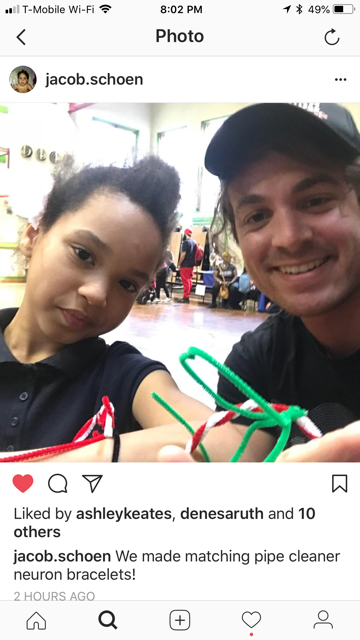
It is fascinating (and often frustrating) how some large institutions with stated missions to serve community through direct engagement often focus more on marketing, administrative bloat, or spectacle, as opposed to real, on the ground community service, interaction and engagement. President Obama, at the Frontiers Conference in Pittsburgh, warned “innovators” against these public resource-wasting efforts, and celebrated those who do the exceptionally rewarding, though often uncompensated work of outreach, listening to and learning from others, and exciting, delighting and inspiring with new knowledge, stories and ideas…

LEARN MORE: Noggin @ White House Frontiers
LEARN MORE: BioGifting brains
And art works.

“I was really aware, even while it was happening, that the discovery of arts education in my life sort of saved my life” – Daveed Diggs
LEARN MORE: Research: Art Works
STEM (Science, Technology, Engineering & Mathematics) outreach is terrific, but STEAM (STEM + Arts) is a particularly effective approach to learning that focuses on guiding student inquiry, and encouraging dialogue and critical thinking through cross-disciplinary instruction. STEAM improves motivation, attention and retention, and unlike the one right answer bubble test approach pushed by companies siphoning taxpayer bucks for public education, it works. Faculty at one university (and happily only one!) once told us that the arts weren’t “useful” for science. Through direct community engagement, and relevant research, we know otherwise…

“In addition to giving our children the science and math skills they need to compete in the new global context, we should also encourage the ability to think creatively that comes from a meaningful arts education” –Barack Obama
LEARN MORE: STEAM @ Newmark: Better schools with improv and art
LEARN MORE: Kayla Townsley: The neuroscience of teaching art & science
LEARN MORE: Building Creative Thinking in the Classroom: From Research to Practice
LEARN MORE: Why Arts Integration Improves Long-Term Retention of Content
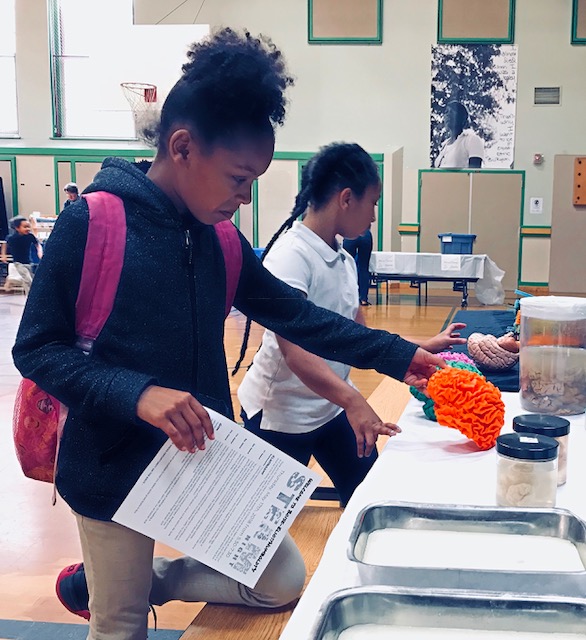
Cutting arts is still step one for some, but learning through painting, drawing, storytelling, drama, music (and pipe cleaner neuron crafting!) is motivating and effective, something that people have known for generations. Research is catching up – and we were lucky to hear more about this topic recently from Dr. Adele Diamond, a Professor of Developmental Cognitive Neuroscience at the University of British Columbia, and an expert on the development of “executive functions” in children…

LEARN MORE: Diamond advice: brains, art, stories & play
LEARN MORE: No Child Left Behind: A Study of Its Impact on Art Education
LEARN MORE: If you want to major in theater, avoid these colleges (2017-2018 edition)
LEARN MORE: Synapses & Stories: Coyote, Grizzly & their Brains
Boise-Eliot/Humboldt is an actively STEAM-focused Portland Public School, a K-8 through the end of this year, but a K-5 elementary beginning in fall. With larger enrollment, they’ve been able to hire Darshanpreet “Darcy” Gill, a STEAM Instructional Specialist, who organized a vibrant, community STEAM Night, and invited us to join in!
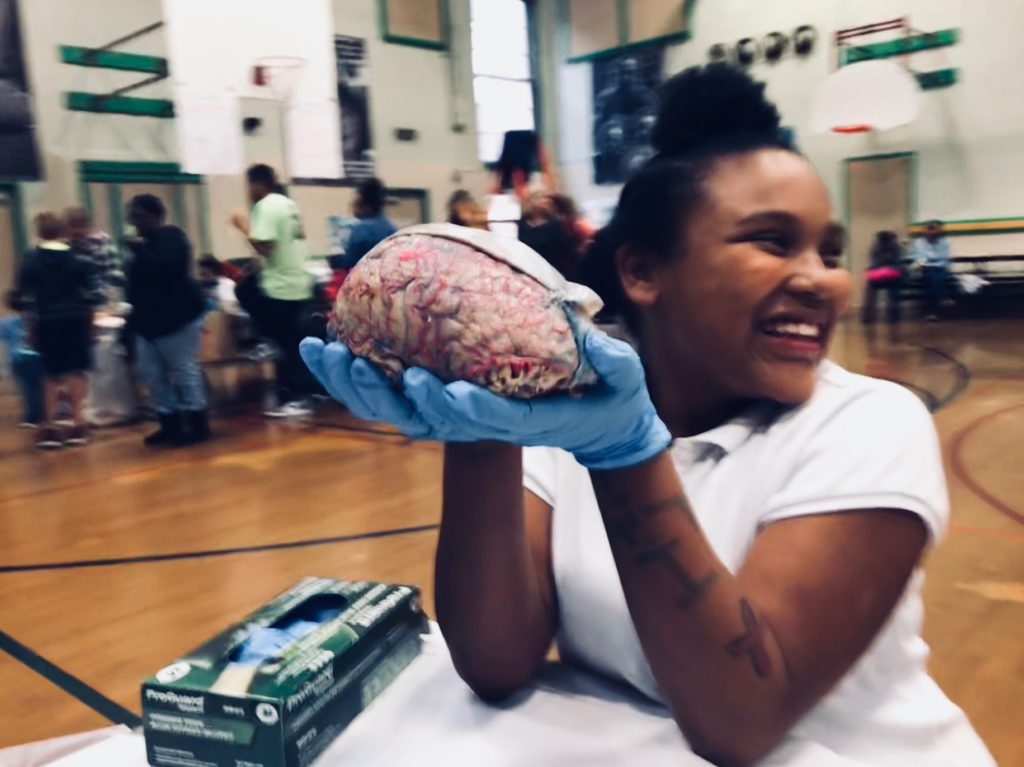
LEARN ABOUT OUR LAST STEAM NIGHT: STEAM Ahead @ Ionotropic Irvington
Sam Carpenter from OHSU, Jacob Schoen from the Oregon National Primate Research Center (ONPRC), McKenzie Figuracion, an NIH BUILD EXITO scholar from Portland State University, and Noggin Resource Council member Joey Seuferling brought their enthusiasm, research knowledge, art skills – and brains!
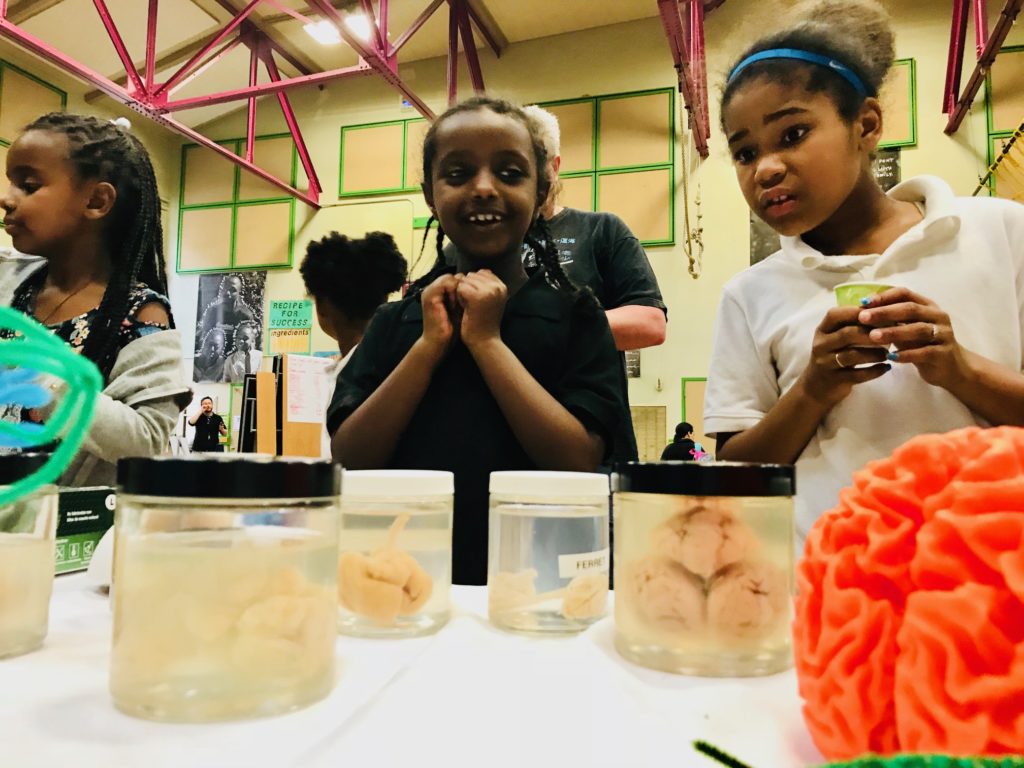

According to Darcy, and PPS, “Through the development and implementation of innovative STEAM teaching and learning practices, all Oregon students will develop the necessary scientific literacy and technological knowledge they need to excel as citizens of our increasingly complex world…”

“The STEAM transformation of Boise-Eliot/Humboldt will be accomplished by striving towards the following student goals/outcomes:

1. Motivational Resilience: Constructive Coping
Students will demonstrate proficiency in adaptive strategizing skills and persistence in the face of academic challenges, obstacles, and setbacks

2. Motivational Resilience: Academic Engagement
Students demonstrate high quality participation in academic work, including effort and enthusiasm

3. Cognitive Skills: Metacognitive Skills
Students will know a variety of problem solving strategies and tools and be able to choose and strategically use these tools

4. Cognitive Skills: Problem Solving
Students will be able to identify, frame, and solve complex problems and apply knowledge and skills to novel problems and/or situations across STEAM subjects

5. Academic Identity
Students will feel a sense of belonging, competency, autonomy and purpose as they view themselves and their potential to enjoy and succeed in STEAM classes and careers…”


Students and their families once again had so many terrific, insightful questions about brains, genetics, comparative neuroanatomy (we brought all our animal cerebrums), how to become a brain scientist, and what research can tell us about sleep, drugs, bias, development, stress…

“How many brain cells do we have? How many does a cat have? A dog..?”
LEARN MORE: Soup for Brains!

“The fish brain is the size of its food!” “So are people who eat fish smarter than others?”
LEARN MORE: Diet vs. Brain
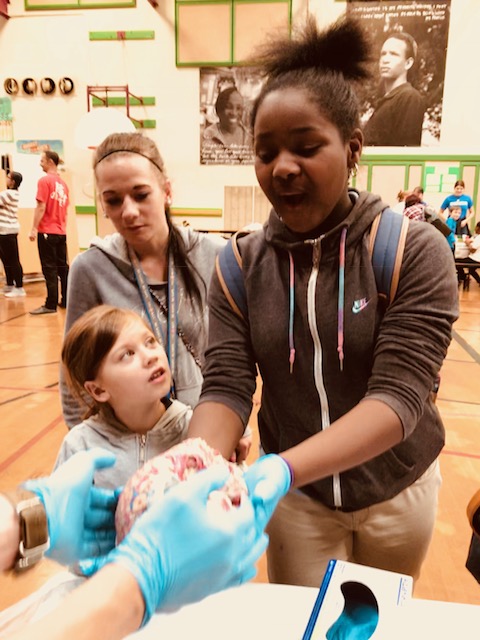
We spoke briefly with the Principal, Kevin Bacon, who is retiring this year, about the idea of focusing public education on the brain, and brain development. He was clearly intrigued by the fact that art, mathematics, social studies, writing, history, languages, self-understanding, physical education – all involve our brains, and K-12 education happens during periods of significant cerebral change…

LEARN MORE: NIH releases first dataset from unprecedented study of adolescent brain development
Our teaching and outreach is based on STEAM, and what we call applied neuroscience; that is, how understanding the biological basis of perception, cognition, behavior and development, and engaging directly with community organizations, classrooms, research laboratories, artists, policy makers and the public at large can help students acquire useful implicit skills, introduce them to diverse educational and career options, and offer them actionable knowledge and insight into how their own strengths in teaching, research, policy and the arts might contribute to our greater understanding of the brain and behavior, and a better world…
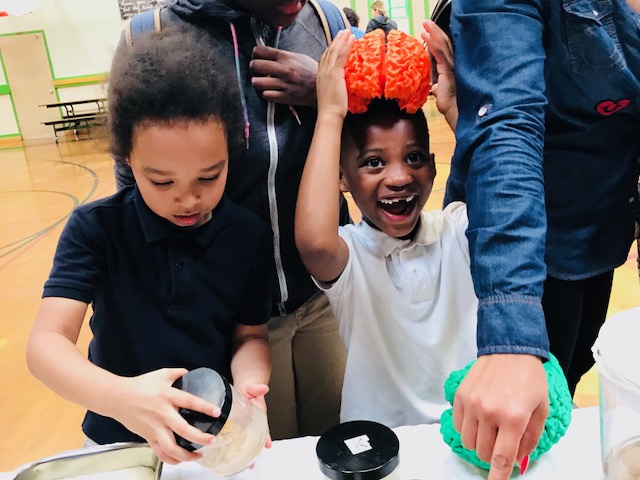
“He just loves the brains! Now he keeps asking me questions about his brain. He keeps coming back to this table – he’s never going to leave…”

From Darcy: “Thank you for coming to our STEAM Night – your station was definitely the talk of the event. I had students do a short write up on their favorite part of STEAM Night and the brains came up a lot! Thanks for the excellent experience you gave our students and families.”

Unfortunately, with lower enrollment, Boise-Eliot/Humboldt is losing Darcy next year, although she’s going to teach physics at Madison High. Of course, if public schools weren’t required to buy standardized assessments and test preparation materials, and if public universities spent less on administration, spectacle and bloat, there would be more funds available to support educational efforts that engage students, inspire them – and actually work.




